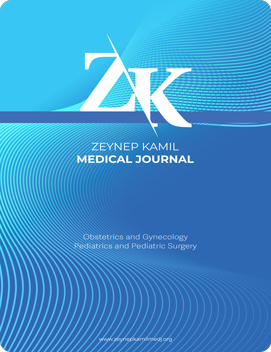Quick Search
Evaluation of inhalant allergen sensitivity in children diagnosed with atopic dermatitis
Seda Çevik1, Uğur Altaş1, Zeynep Meva Altaş2, Mehmet Yaşar Özkars11Department of Pediatric Allergy and Immunology, University of Health Sciences, Umraniye Training and Research Hospital, Istanbul, Turkey2Department of Public Health, Umraniye District Health Directorate, Istanbul, Turkey
INTRODUCTION: Atopic dermatitis (AD) is a recurrent and inflammatory chronic skin disease, particularly common in children. In the context of our study, the aim is to determine the frequency of respiratory allergen sensitivity in children diagnosed with atopic dermatitis.
METHODS: In this descriptive study, conducted between October 2022 and October 2023, the medical records of patients aged 0-18 with atopic dermatitis who presented to the Pediatric Allergy and Immunology Clinic were retrospectively reviewed. The analysis included age, gender, eosinophil counts, and total IgE levels. The patients IgE and eosinophil values were measured during their initial visit when they had complaints.
RESULTS: When examining the food and inhalant allergen sensitivity of patients, the most common sensitivity was to house dust mites (30.6%), followed by egg allergen sensitivity (28.6%). Eosinophil percentage and total IgE levels were also statistically significantly higher in those with inhalant allergen sensitivity compared to those without (p=0.003 and p<0.001, respectively). The cut-off point for total IgE in predicting inhalant allergen sensitivity was determined to be 99.5. Sensitivity and specificity values for the cut-off point of total IgE were 71.6% and 70.9%, respectively.
DISCUSSION AND CONCLUSION: In conclusion, this article assessed the frequency of inhalation allergen sensitivity in atopic dermatitis. Sensitivity to allergens such as house dust mites, eggs, and milk was determined to be increased, emphasizing the potential critical role of indoor environments in the pathogenesis of AD. Additionally, it was found that eosinophil percentage and total IgE values were significantly higher in those with inhalation allergen sensitivity. These findings are important for understanding the clinical characteristics of patients and developing effective treatment strategies.
Manuscript Language: English
















